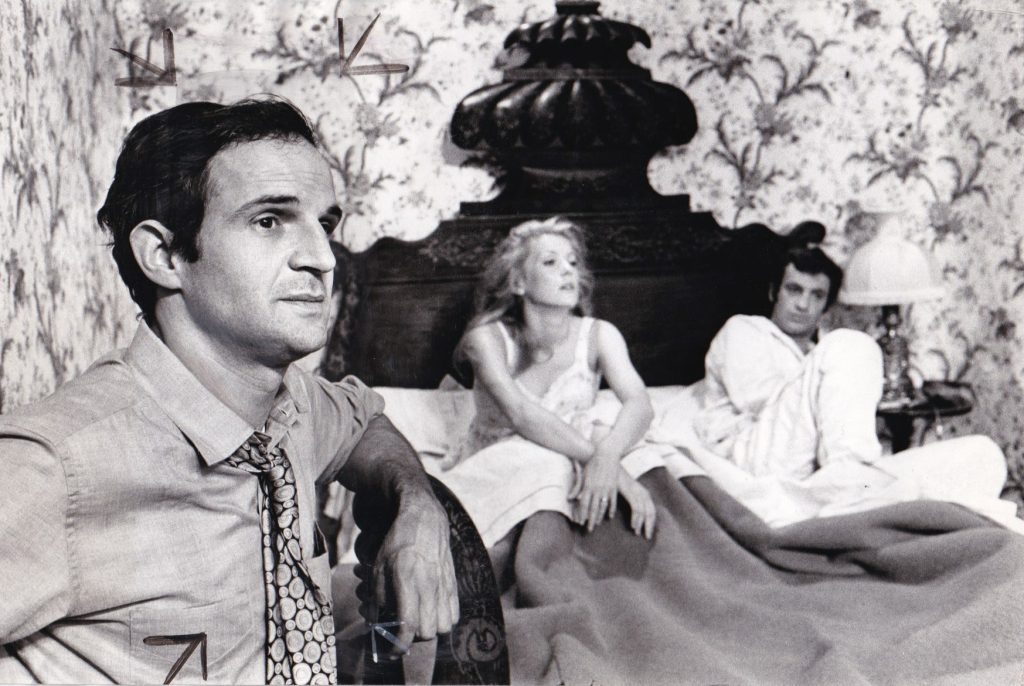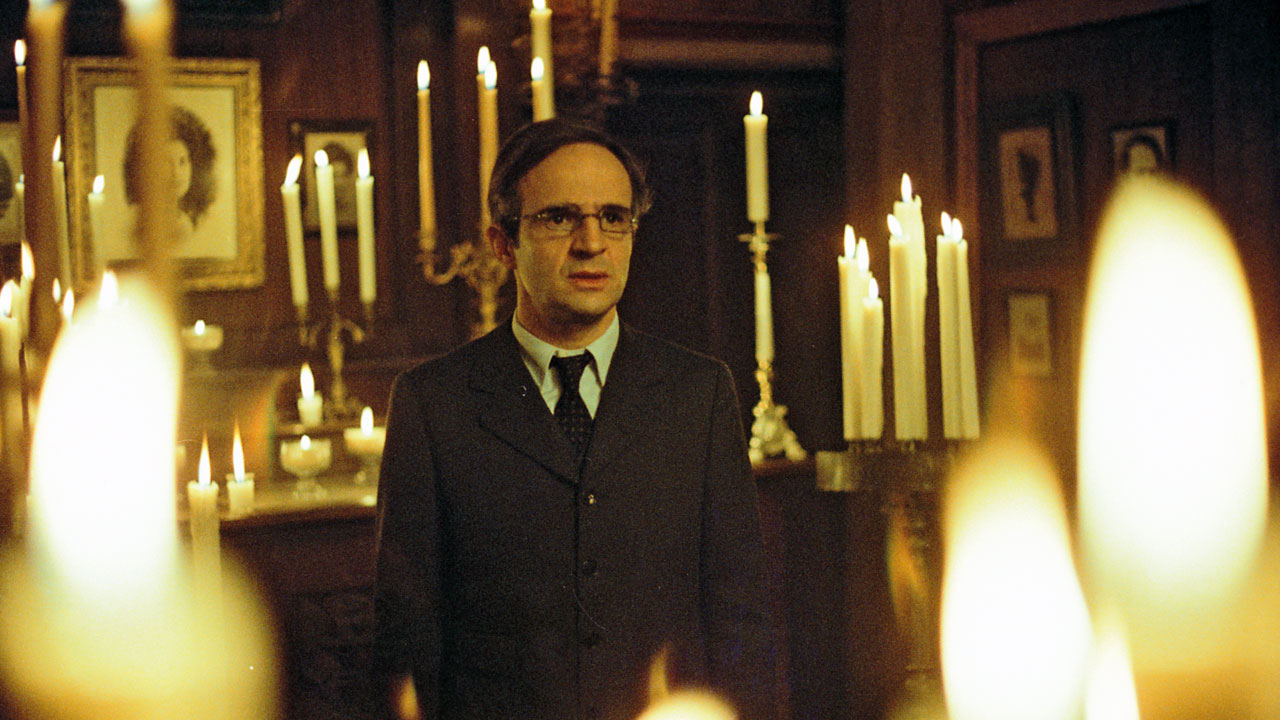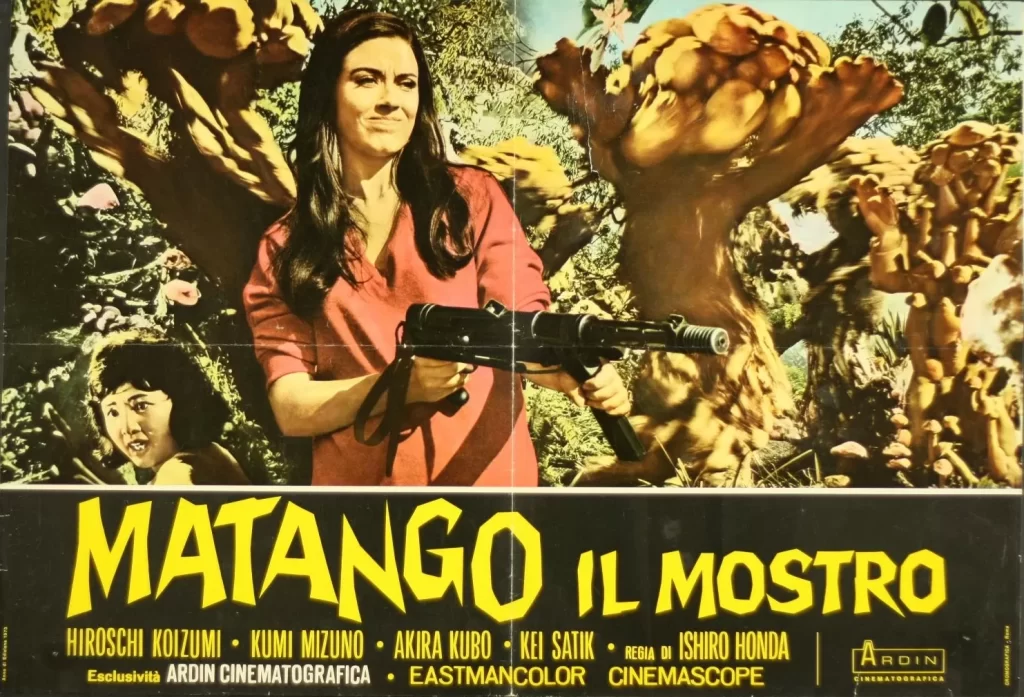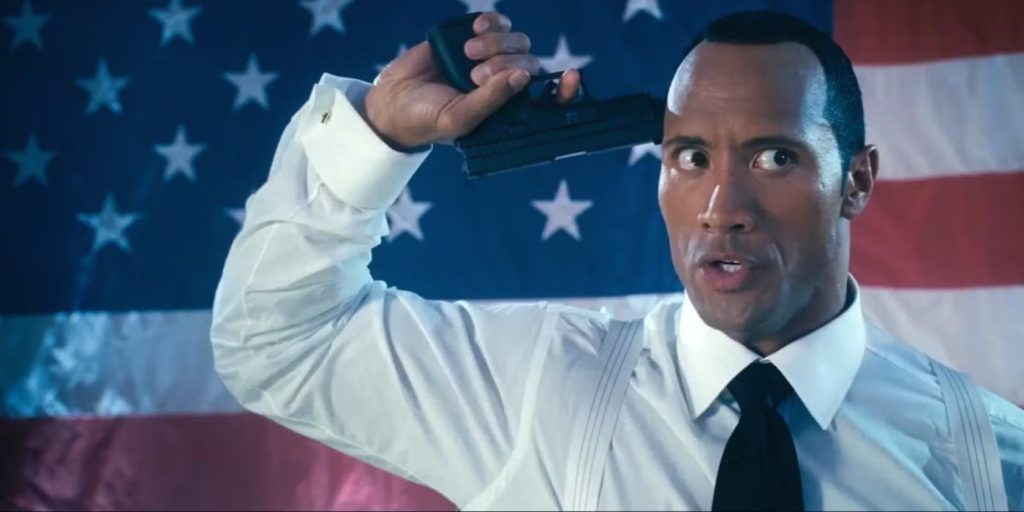I love Quentin Tarantino. His work as a filmmaker is obviously unimpeachable; Pulp Fiction quite literally changed my life (and I’ve written the book to prove it), and every film since – not a bad one in the bunch, I’d argue – has both moved the form forward and served as a notch in one of the most fulfilling and exhilarating artistic evolutions in modern film. And his advocacy for film is nothing to sneeze at either – not just his ongoing agreement to put his money where his mouth is in terms of both celluloid production and exhibition, but his career-long insistence on boosting the movies that inspire and excite him, no matter how obscure or disreputable.
But having this kind of affection for Tarantino, and for what he does and stands for, also means coming to terms with the fact that he is occasionally, inarguably, and entirely full of shit – inexplicably obsessed with some nothingburger or other, bafflingly dismissive of a particular film or filmmaker, unwaveringly insistent that a tossed-off quickie that even its creators have forgotten is far superior to another, vaunted classic. This is just who he is, in both the formulation of the opinion and the stubbornness about it. In an early interview, he said, of film geeks like himself, “they devote a lot of their time, they devote a lot of money, a lot of their life to the following of film. But they don’t have a lot to show for this devotion, except . . . they have an opinion. A highly developed opinion… I’m a film geek. My opinion is everything—you can disagree with me, I don’t care! I know I’m right, as far as I’m concerned, and I’ll argue anybody down.”
That “highly developed opinion” was, in many ways, cultivated and refined at the counters of Video Archives, the video store where he worked (and, in lieu of proper film school, educated himself) in his 20s. And that opinion now gets a workout, on a weekly basis, on the podcast that bears the video store’s name, where he and Archives co-worker (and occasional film collaborator) Roger Avary talk about the movies that lined its shelves. And it was on that show’s fourth episode, in a discussion of the Claude Chabrol thriller Dirty Hands, that Tarantino dropped this doozy (as noted by Farran Nehme in her wonderful Sight & Sound profile of the duo): “I’m not a Truffaut fan that much anyway. There are some exceptions, the main one being The Story of Adele H. But for the most part, I feel about Truffaut like I feel about Ed Wood. I think he’s a very passionate, bumbling amateur.”
Around the same time, Tarantino launched a similar broadside against François Truffaut in his often thoughtful, borderline unreadable book Cinema Speculation, disparaging “Truffaut’s amateur, clumsy bumbling of The Bride Wore Black” and surmising, “It’s doubtful a master filmmaker like De Palma was ever charmed by Truffaut’s Ed Wood-like amateur bumbling.” So yes, if you’re keeping track, that’s two separate comparisons of Truffaut, one of the masters of the French New Wave, to the man memorialized as the worst filmmaker to ever step behind a camera. It’s a deliberate provocation, yes, but it’s more than that. He’s not merely dismissing Truffaut as not to his taste; he’s attacking his very ability as a filmmaker. He’s not calling him dull or lightweight or bourgeois or any of the other labels that have been periodically lobbed at Truffaut by his critics; he’s claiming incompetence, an inability to shoot and assemble images. This is not “opinion” – it’s stating, as fact, something that is patently, demonstrably false, but Truffaut is far enough in the rearview, and Tarantino’s voice is loud enough and dominant enough in contemporary film discourse, to curdle this into some kind of conventional wisdom.
Luckily, we have the films themselves newly and readily available to dispute this nonsense, and while I know the mastering and duplication process would not allow such a quick turnaround (nor are they in the business of wading into fringe Film Twitter beefs), it almost feels like KL Studio Classics released their seven new Truffaut Blu-rays to properly combat Tarantino’s slander. And bear in mind, these aren’t even his certified classics (there’s no 400 Blows, Jules & Jim, Shoot the Piano Player, or Day For Night); these are his B-sides, his deep cuts. One of them is, in fact, the aforementioned 1968 film The Bride Wore Black, a picture that was quite directly inspired by the filmmaker’s famous, book-length interview with Alfred Hitchcock. Tarantino’s primary complaint seems to be that Truffaut didn’t properly master the Master of Suspense’s thriller techniques – in Cinema Speculation, he bemoans the picture’s lack of “cool shots” and compares it unfavorably with the Hithcock-style thrillers of his fave, Brian De Palma.
But this is a maddening simplification of what makes Hitchcock great. Bride – which was surely an inspiration point, whether he’ll admit it or not, for Tarantino’s Kill Bill duo – tells the story of Julie (Jeanne Moreau), whose husband is murdered in a random shooting on their wedding day, so she sets out to methodically eliminate everyone responsible. Some of the kills are, admittedly, a little clumsy, but you know what? They called Hitch the master for a reason. What’s just as important, perhaps more so, is how Truffaut captures Hitchcock’s sense of playfulness (the way he moves his camera and plays with text) and his dark sense of humor (by the back half of the picture, we’re giggling in anticipation for the kills to come). And the grimness of the epilogue underscores that this wasn’t just a filmmaker riffing on Hitch, but one willing to grapple with the darkness of the themes he explores in his best work.
The following year’s Mississippi Mermaid, also out in a new stand-alone Blu-ray from KL, is even better. Hitch looms large over this one as well, but a different version of the filmmaker – the To Catch A Thief variation, intrigued by beautiful people doing bad things in beautiful places. He has the good sense to cast Jean-Paul Belmondo and Catherine Deneuve (about as close to a French Cary-and-Grace as you can get) in the leading roles, as a wealthy tobacco tycoon and the mail-order bride who, unsurprisingly, is not what she seems. All of that material works beautifully, while Truffaut works a sun-soaked noir vibe that injects the picturesque goings-on with a sense of looming dread. But what’s really fascinating is what happens to the the pair after she does him wrong, and after he tracks her down; “I can’t say that I’m happy with her,” he despairs, “but I’m unable to live without her.” Amen, brother. (And if Paul Thomas Anderson wasn’t thinking of this movie’s ending when he wrote Phantom Thread, I’ll eat my hat.)

The final stand-alone release of the bunch is 1975’s The Story of Adele H., which even Tarantino can’t treat like anything less than a banger. One of Truffaut’s biggest successes, it stars Isabelle Adjani in a story of love and obsession, an eerily sympathetic character study of a woman on the edge, given genuine electricity by an absolutely enthralling Adjani performance; this is several years before Possession, but a piece of acting that should be equally celebrated.
The other four films are housed in a two-disc François Truffaut Collection. The 1970 drama The Wild Child stars Truffaut himself as an 18th-century doctor charged with studying – and then, educating and refining – a young boy, found in a forest and living like an animal. Shot in austere black and white and offsetting its subject and title with a quiet, authoritative power, it’s one of Truffaut’s most assured films (and, it seems reasonable to conclude, a clear influence on David Lynch’s The Elephant Man). Small Change, from 1976, is a startling contrast – a vibrant, full-color, coming-of-age movie, a memory play set mostly in and around a primary school classroom, filled with quirky, well-defined characters (both the kids and, refreshingly, their parents and teachers) and one of the all time great cinematic saved-by-the-bell moments.
A year later – he really was just banging these dingers out – he released The Man Who Loved Women, a title that has unfortunately been usurped (by those of us who even remember such things) by Blake Edward’s unfortunate, Burt Reynolds-fronted remake. But it’s a sexy, sophisticated, and sometimes uncomfortably honest piece of work that delves into the obsessive, borderline narcissistic nature of womanizing in a way that plays like confession. And the set’s most staggering film – again, released the very next year – may be The Green Room, a haunting meditation on the nature of longing and grief. But this is not some archaic French thought exercise; he demonstrates a keen understanding of not only sadness of grief but the seductiveness of it, how never letting go can become so central to one’s life that you stop even wanting to.
Running down this extraordinary septet – all released between 1968 and 1978 – also reminds us of Truffaut’s tremendous versatility. This doesn’t even represent everything he released in the period, but we have character-driven drama, light comedy, thriller, film noir riff, and more, a cornucopia of genres tackled with his signature professionalism and intelligence. Perhaps that is what Tarantino is knee-jerk responding to; that professionalism is Truffaut’s authorial voice, rather than a particular visual aesthetic or thematic preoccupation, qualities typical of the filmmakers QT typically embraces. Or maybe it’s the sheen of respectability to the work – in this period especially, a new Truffaut was an annual event lauded by the New York critics and dutifully attended by art-house denizens. Based on his subsequent statements, it’s easy to imagine that reputation embedding itself in a negative way.
But I have my own theory. In a scene famously shot but deleted for Pulp Fiction, the first conversation between Mia Wallace (Uma Thurman) and Vincent Vega (John Travolta) is an “interview” in which she posits, “when it comes to important subjects, there’s only two ways a person can answer. And which way they choose, tells you who that person is. For instance, there’s two kinds of people in this world, Elvis people and Beatles people. Now Beatles people can like Elvis, and Elvis people can like the Beatles. But nobody likes them both equally. Somewhere you have to make a choice. And that choice tells you who you are.”
Simply put, I believe that Tarantino thinks there are Truffaut people and Godard people, and he considers himself a Godard person – as manifested both in onscreen influence and the off-screen name of his production company. (Godard, ever the contrarian, was not a Tarantino person.) But this way of thinking is simplistic and unimaginative and thoughtless; it was when Tarantino shot that scene in 1994, and it’s even more so now, the kind of reductive, hot-take link-chasing that has poisoned nuanced conversation about cinema, and about art in general, not only on shrieking social media platforms but on and in the pages of respectable outlets. Truffaut may not be your particular brand of vodka, but he was gifted and influential and important, and digging in your heels and pretending otherwise doesn’t make you a better cinephile. It makes you a sports guy, rooting unquestioningly for the home team, and if there’s one thing we should be safe from in movie geek circles, it’s sports guys.



